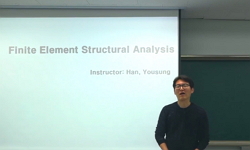Study Design: This is a finite element (FE) study. Purpose: To compare the fixation strength of traditional trajectory (TT) and single and double endplate penetrating screw trajectories (SEPST/DEPST) to the osteoporotic vertebral body model based on t...
http://chineseinput.net/에서 pinyin(병음)방식으로 중국어를 변환할 수 있습니다.
변환된 중국어를 복사하여 사용하시면 됩니다.
- 中文 을 입력하시려면 zhongwen을 입력하시고 space를누르시면됩니다.
- 北京 을 입력하시려면 beijing을 입력하시고 space를 누르시면 됩니다.


Comparison of the Fixation Strengths of Screws between the Traditional Trajectory and the Single and Double Endplate Penetrating Screw Trajectories Using Osteoporotic Vertebral Body Models Based on the Finite Element Method
한글로보기https://www.riss.kr/link?id=A108968013
-
저자
Takeuchi Takumi (Kyorin University School of Medicine, Mitaka, Japan) ; Takamizawa Yuhei (Kyorin University School of Medicine, Mitaka, Japan) ; Konishi Kazumasa (Kyorin University School of Medicine, Mitaka, Japan) ; Sano Hideto (Kyorin University School of Medicine, Mitaka, Japan) ; Takahashi Masahito (Kyorin University School of Medicine, Mitaka, Japan) ; Kouno Hitoshi (Keiyu Orthopaedic Hospital, Tatebayashi, Japan) ; Hosogane Naobumi (Kyorin University School of Medicine, Mitaka, Japan)
- 발행기관
- 학술지명
- 권호사항
-
발행연도
2024
-
작성언어
English
- 주제어
-
등재정보
KCI등재,SCOPUS,ESCI
-
자료형태
학술저널
-
수록면
12-20(9쪽)
- DOI식별코드
- 제공처
-
0
상세조회 -
0
다운로드
부가정보
다국어 초록 (Multilingual Abstract)
Purpose: To compare the fixation strength of traditional trajectory (TT) and single and double endplate penetrating screw trajectories (SEPST/DEPST) to the osteoporotic vertebral body model based on the FE method.
Overview of Literature: SEPST/DEPST have been developed to enhance the fixation strength in patients with diffuse idiopathic hyperostosis (DISH). This technique was also applied to patients with osteoporosis. However, determining the superiority of SEPST/DEPST is difficult because of the heterogeneous patient backgrounds.
Methods: Twenty vertebrae (T12 and L1) from 10 patients with osteoporosis (two males and eight females; mean age, 74.7 years) were obtained to create the 10 FE models. First, a single screw was placed with TT and SEPST/DEPST, and the fixation strength was compared by axial pullout strength (POS) and multidirectional loading tests. Second, two screws were placed on the bilateral pedicles with TT and SEPST/DEPST, and the fixation force of the vertebrae in the constructs in flexion, extension, lateral flexion, and axial rotation was examined.
Results: SEPST and DEPST had 140% and 171% higher POS values than TT, respectively, and the DEPST result was statistically significant (p=0.007). The multidirectional fixation strength was significantly higher in DEPST and SEPST than in TT in the cranial, caudal, and medial directions (p<0.05) but not in the lateral direction (p=0.05). The vertebral fracture strength at the lower instrumented vertebra of the DEPST tended to be higher than that of TT. The vertebral motion angles in SEPST and DEPST were significantly smaller in lateral bending (p=0.02) and tended to be smaller in flexion and extension than in TT (p=0.13).
Conclusions: This study may provide useful information for spine surgeons in deciding whether to choose the SEPS or DEPS technique for augmenting fixation in osteoporotic vertebral fracture surgery.
Study Design: This is a finite element (FE) study.
Purpose: To compare the fixation strength of traditional trajectory (TT) and single and double endplate penetrating screw trajectories (SEPST/DEPST) to the osteoporotic vertebral body model based on the FE method.
Overview of Literature: SEPST/DEPST have been developed to enhance the fixation strength in patients with diffuse idiopathic hyperostosis (DISH). This technique was also applied to patients with osteoporosis. However, determining the superiority of SEPST/DEPST is difficult because of the heterogeneous patient backgrounds.
Methods: Twenty vertebrae (T12 and L1) from 10 patients with osteoporosis (two males and eight females; mean age, 74.7 years) were obtained to create the 10 FE models. First, a single screw was placed with TT and SEPST/DEPST, and the fixation strength was compared by axial pullout strength (POS) and multidirectional loading tests. Second, two screws were placed on the bilateral pedicles with TT and SEPST/DEPST, and the fixation force of the vertebrae in the constructs in flexion, extension, lateral flexion, and axial rotation was examined.
Results: SEPST and DEPST had 140% and 171% higher POS values than TT, respectively, and the DEPST result was statistically significant (p=0.007). The multidirectional fixation strength was significantly higher in DEPST and SEPST than in TT in the cranial, caudal, and medial directions (p<0.05) but not in the lateral direction (p=0.05). The vertebral fracture strength at the lower instrumented vertebra of the DEPST tended to be higher than that of TT. The vertebral motion angles in SEPST and DEPST were significantly smaller in lateral bending (p=0.02) and tended to be smaller in flexion and extension than in TT (p=0.13).
Conclusions: This study may provide useful information for spine surgeons in deciding whether to choose the SEPS or DEPS technique for augmenting fixation in osteoporotic vertebral fracture surgery.
동일학술지(권/호) 다른 논문
-
- 대한척추외과학회
- Tan Lixian
- 2024
- KCI등재,SCOPUS,ESCI
-
- 대한척추외과학회
- Zhao Jian
- 2024
- KCI등재,SCOPUS,ESCI
-
- 대한척추외과학회
- Wang Guodong
- 2024
- KCI등재,SCOPUS,ESCI
-
- 대한척추외과학회
- Lee Deokcheol
- 2024
- KCI등재,SCOPUS,ESCI




 KCI
KCI






